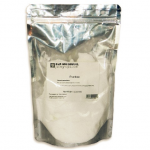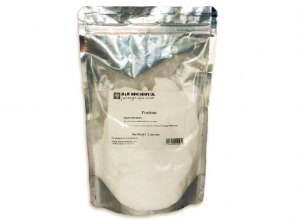Recent Posts
Archives
- October 2025
- August 2025
- June 2025
- March 2025
- February 2025
- November 2024
- September 2024
- August 2024
- April 2024
- March 2024
- January 2024
- December 2023
- November 2023
- October 2023
- September 2023
- August 2023
- July 2023
- June 2023
- May 2023
- April 2023
- March 2023
- February 2023
- September 2022
- August 2022
- April 2022
- March 2022
- December 2021
- November 2021
- October 2021
- September 2021
- August 2021
- July 2021
- June 2021
- May 2021
- April 2021
- March 2021
- February 2021
- October 2020
- September 2020
- August 2020
- July 2020
- June 2020
- May 2020
- April 2020
- March 2020
- February 2020
- January 2020
- December 2019
- November 2019
- October 2019
- September 2019
- August 2019
- July 2019
- April 2019
- March 2019
- February 2019
- January 2019
- December 2018
- November 2018
- October 2018
- September 2018
- August 2018
- July 2018
- June 2018
- May 2018
- April 2018
- March 2018
- February 2018
- January 2018
- November 2017
- October 2017
- September 2017
- August 2017
- July 2017
- June 2017
- May 2017
- April 2017
- March 2017
- February 2017
- January 2017
- December 2016
- November 2016
- October 2016
- September 2016
- August 2016
- July 2016
- June 2016
- May 2016
- April 2016
- March 2016
- February 2016
- January 2016
- September 2015
- August 2015
- April 2015
- February 2015
- January 2015
- December 2014
- November 2014
- September 2014
- July 2014
- June 2014
- March 2014
- June 2013
- July 2012
Categories
adding sugar to your wine
The Winemaker’s Think Tank: Vol 17 – Should I Add Sugar?
What’s the Winemaker’s Think Tank?
Every Thursday we will post about a few frequently asked questions that our winemaker has answered. If you have a winemaking question you would like to have answered, please email us at support@juicegrape.com and we will try to get into next week’s post. Cheers! 🙂
Do I add sugar?
Adding sugar can fall into two categories. If sugar is added prior to fermentation, it is called chapitalization and will increase the Brix (sugar level) of the must, resulting in a higher alcohol by volume wine. The yeast will process this sugar in addition to the grape sugars and will turn it into alcohol. Chapitalization is an important step for under ripe grapes, lacking in sugar.
Another form of sugar addition to wine is post-fermentation. This must be done with much care as to not restart fermentation. Adding the sugar after fermentation may reactivate yeast by offering them another food source and cause them to ferment that sugar as well. This can be prevented by adding sulfites to at least 50ppm to kill off the yeast. Adding sugar after sulfites will effectively back sweeten the wine, giving residual sugar and a sweet flavor to the wine. The winemaker can also add potassium sorbate to the wine, provided that the wine has not gone through malo-lactic fermentation. Potassium sorbate cannot be added to a wine that has undergone MLF as it will result in an off aroma of geranium taint. Potassium sorbate is strongly suggested for white wines that the winemaker would like to add residual sugar to. The sorbate will encapsulate any yeast particles, prohibiting them from metabolizing the sugar that was added for sweetening.
We hope this information helps with your winemaking. If you have any follow up questions or winemaking questions in general, please email us at support@juicegrape.com.
Archives
- October 2025
- August 2025
- June 2025
- March 2025
- February 2025
- November 2024
- September 2024
- August 2024
- April 2024
- March 2024
- January 2024
- December 2023
- November 2023
- October 2023
- September 2023
- August 2023
- July 2023
- June 2023
- May 2023
- April 2023
- March 2023
- February 2023
- September 2022
- August 2022
- April 2022
- March 2022
- December 2021
- November 2021
- October 2021
- September 2021
- August 2021
- July 2021
- June 2021
- May 2021
- April 2021
- March 2021
- February 2021
- October 2020
- September 2020
- August 2020
- July 2020
- June 2020
- May 2020
- April 2020
- March 2020
- February 2020
- January 2020
- December 2019
- November 2019
- October 2019
- September 2019
- August 2019
- July 2019
- April 2019
- March 2019
- February 2019
- January 2019
- December 2018
- November 2018
- October 2018
- September 2018
- August 2018
- July 2018
- June 2018
- May 2018
- April 2018
- March 2018
- February 2018
- January 2018
- November 2017
- October 2017
- September 2017
- August 2017
- July 2017
- June 2017
- May 2017
- April 2017
- March 2017
- February 2017
- January 2017
- December 2016
- November 2016
- October 2016
- September 2016
- August 2016
- July 2016
- June 2016
- May 2016
- April 2016
- March 2016
- February 2016
- January 2016
- September 2015
- August 2015
- April 2015
- February 2015
- January 2015
- December 2014
- November 2014
- September 2014
- July 2014
- June 2014
- March 2014
- June 2013
- July 2012









Recent Comments